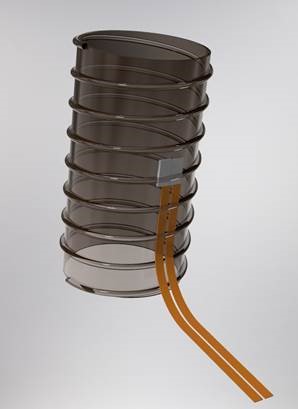Studies on Micro- and Nanosystems
Literature research: Heat flux sensing for the detection of infection on implantable systems

Precision medicine using sensors at the implant surface could thereby aid early diagnosis of localized infections. Literature research supports the potential of heat flux changes for the localized detection of implant infection. To mimic the in vivo conditions, an in vitro experimental system is used. The goal of this project is to optimize the in vitro microfluidic fabrication, both by taking into account the complexity of the heat transfer system by applying optimized design parameters extracted from Comsol in addition to optimizing the fabrication process itself. A studies project adjacent to this topic is currently also open.
Background: Mechanical/Electrical/Biomedical Engineering, and Material Science
Supervision: Signe Lin Vehusheia
DownloadMore information (PDF, 261 KB)vertical_align_bottom
Strain actuators at the micro and nanometric resolution: cost and market analysis
The proposed study on Micro and Nanosystems has as main goal to conduct a market analysis of different strain actuators, with resolution at the micro and nanometric scale.
Cost evaluations and experimental conditions must be taken into account, in order to select the best candidates for the main research project.
Supervision:
Raman spectroscopy - monitoring of SWNT's environment changes
Electronic structure of a Single Walled Carbon Nanotube (SWNT) is influenced by many extrinsic factors such as chemical composition of the nanotube environment, temperature, pressure, and applied stress. Changes to the SWNT electronic structure can be detected by Raman spectroscopy. This study is focused on a literature search to determine sensitivity and resolution of SWNT Raman spectroscopy, and its dependence on the conditions applied to the nanotube.
Supervision:
Horizontally aligned SWNT growth for integration into nanodevices
The efficiency of production of carbon nanotube devices can be dramatically increased if nanotubes are grown in a defined direction. This study will focus on a literature search to determine conditions for the horizontally aligned growth of single walled carbon nanotubes utilizing CVD method.
Supervision:
Controlled loading of apoferritin with various metals
A literature search on protein based formation of size restricted clusters of metals. Apoferritin is a hollow structure formed by proteins and it can by partly or fully filled with ions of different metal. The chemical environment, temperature and loading time are the typical controlling factor of the filling rate. The size of metal clusters formed inside of apoferritin is crucial for diameters and properties of single walled carbon nanotubes catalytically grown from the metal clusters.
Supervision:
